Doom: The Dark Ages Review
This review contains spoilers.
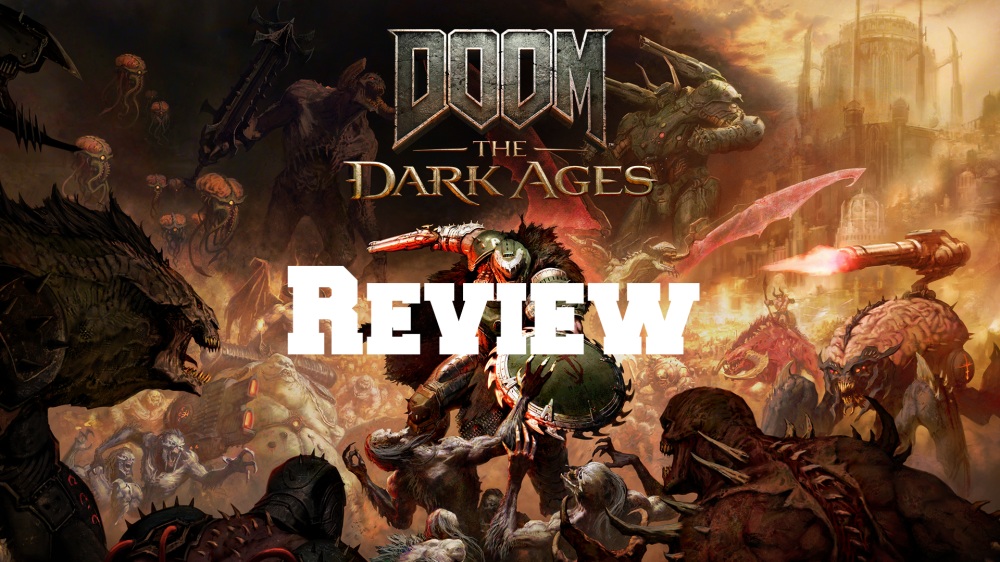
I have two special skills. Superpowers. Video game style, one of them is an active skill, the other a passive. My active skill is that I can not fart on command. Not “I cannot fart on command”, that’s not a skill, no, I can “not fart” on command. Any time at all, I can not fart. If I ever fart and you’re around to witness it, assume I did it on purpose and contemplate what that means. I can choose to not engage this skill, but generally I have it mapped to my scroll wheel and I have that motherfucker freespinning.
The other special skill I have is passive. It’s always on. It’s like Rogue’s ability to steal mutant powers, or Jack Black’s ability to make a movie watchable. It’s the ability to optimise the fun out of a game.
I’ve talked about it before, I’ve talked about it for years. I know I do it. I can’t turn it off. Maybe it’s learned behaviour. I’ve spent 19 years playing games to deadline, after all. Maybe I turned a talent for playing games well into playing them efficiently, and over time that became my default state.
Maybe, if this is true, I could unlearn this behaviour. But that would take time. Effort. Desire.
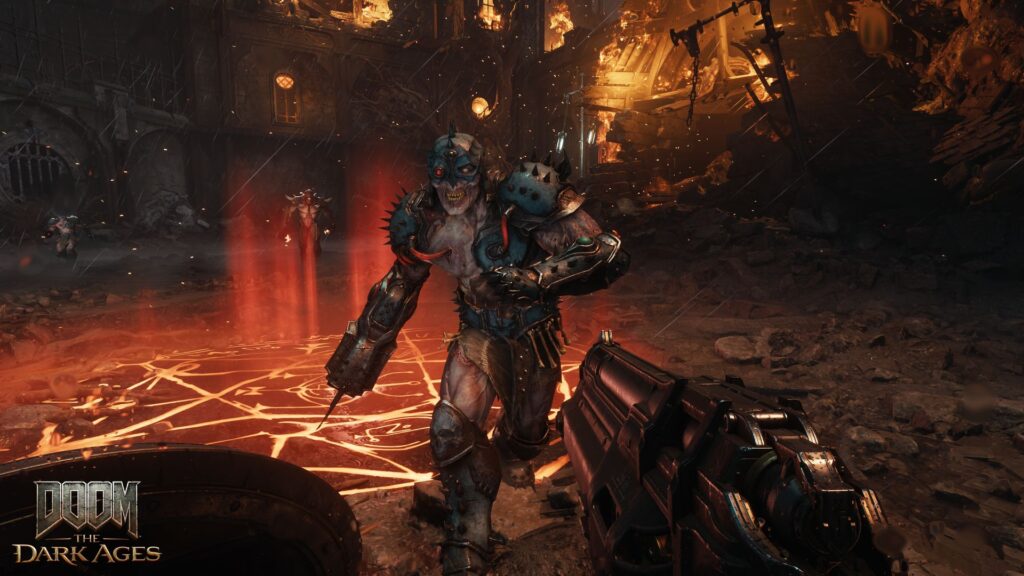
For now, it remains permanently on. Sometimes I can trick my brain about what optimal actually is, but generally there’s no way around it.
I’ve found it’s usually a good thing. Some games just don’t optimise the fun away. They’re too mechanically complex, or they’re endlessly evolving, or they know how to wrap things up before they overstay their welcome.
Doom Eternal was one of those games, although it was a close call towards the end. The mechanical complexity of its ‘puzzle combat’ style meant that even when you’d faced an enemy before, you’d never seen it combined with certain others, or across specific arena layouts, or while wielding a certain weapon. The only real hitch in Eternal’s step was the Marauder, an enemy one might charitably describe as a “momentum dick punch”.
Other games optimise the fun away very quickly. They might have a lot going on—lots of weapons, lots of enemies, lots of different environments—but the complexity just isn’t there. You stumble across a strategy that works, that you can replicate, and you exploit that strategy until you finish the game.
Doom 2016 was one of those games. If you played it as a resource management game (and all games are, in fact, resource management games but I’m not quite ready to debut the Joab Gilroy “MonoDesign” theory) then you maintained your primary resource (health) while efficiently spending your secondary resource (ammo). The optimal way to do this in Doom 2016 was by running backwards around whatever arena you’re in, killing enemies using the Super Shotgun. If you ran out of shotgun ammo, you used another gun until you found more shells.
Doom: The Dark Ages does away with the puzzle combat of Doom Eternal. It takes the “killbox” style combat of Doom 2016, and it gives the Slayer a shield. So now you don’t even need to run backwards. You can just stand and block.
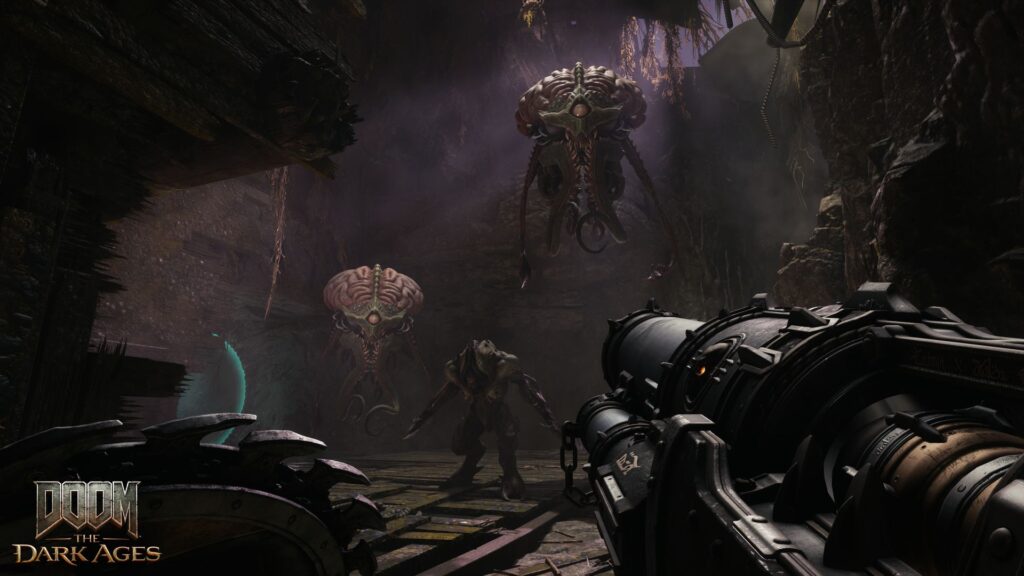
This allows you to optimise away the fun almost immediately.
Actually, Doom: The Dark Ages appears to optimise a lot of the fun away for you. Take the map. Here is a map that tells you, at all times, where everything is. Press tab and a wireframe blueprint of the entire current level marks all “secrets” for you to find. Calling them secrets is like balancing a treat on a dog’s nose and calling that hidden.
It makes the linear levels of Doom: The Dark Ages exercises in boxchecking. A to-do list that you scroll down and tick off, making sure you get any nearby secrets before you move on. It makes the open levels that too, but it’s less of a list and more a scatter graph.
There’s very little sense of discovery in Doom: The Dark Ages. Even when you find a new weapon—and they’re always obvious, so you can’t miss them—the game insists on freezing time to tell you exactly what the weapon does. It’s constantly freezing time to tell you exactly what to do in a situation.
When you first encounter an enemy that is intending on attacking you with a slow-moving green projectile, DTDA stops time to tell you how to parry it. It’s so blindly obvious, and the projectile moves so slowly, that as I stood there waiting for the evil archer from hell riding some sort of dire wolf to finally shoot an uncharacteristically bright green projectile at me, I had plenty of time to wonder what happened at id Studios for it to go down this way.
What kind of feedback did they get in playtesting? Why is this game catering to people who can’t work out that a Super Shotgun is like the Combat Shotgun but better?
And here’s the real question: can those people even read? Is a half a screen of text actually fit for purpose when trying to breadcrumb the people who require an explanation on what the Rocket Launcher does? It launches rockets. It’s in the name. It’s very similar to the Grenade Launcher, which was similarly self-explanatory.
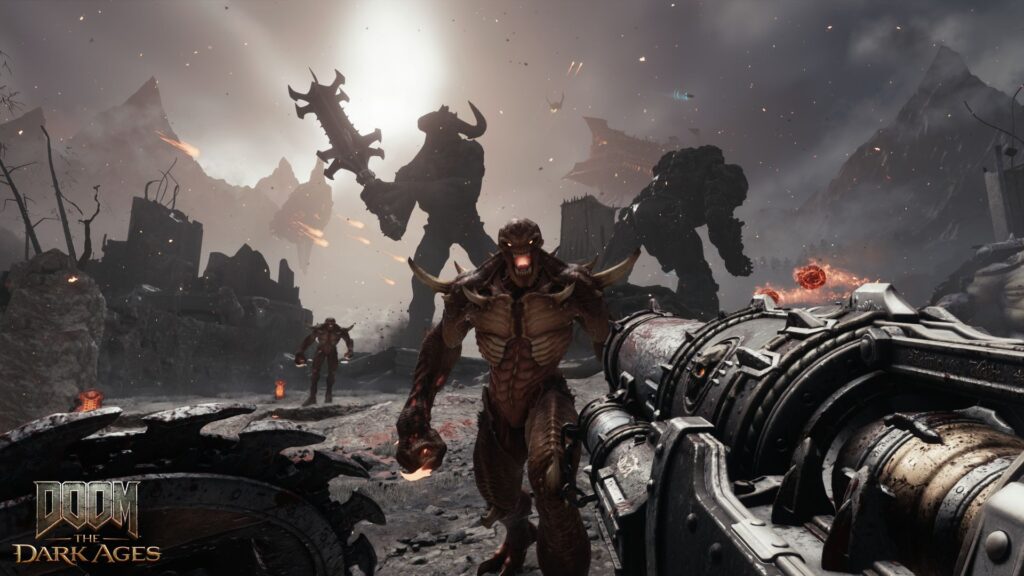
But it’s emblematic of DTDA’s complete lack of faith in the player. I can’t remember the last time I played a game that seemed to be more contemptuous of the intelligence of its audience. Everything is spelled out. The cutscenes go on and on. They’re mercifully skippable (I didn’t skip them because I’m a professional, but it’s nice to know you can). Nothing is left to chance. I mentioned a spoiler warning up top, right, so let me just jump into it. You get betrayed, but because the cutscenes spelled out in detail that betrayal, it never comes as a surprise. You know it’s coming. It’s from the person you most suspected, and…
I try not to read reviews before my own review is complete, right? But I do not live in a vacuum. I cannot block out all conversation regarding a Triple-A piece of media in the field I work in. Especially if Google already knows I’ve been talking about it.
I have seen some of the negative reviews of Doom: The Dark Ages. I haven’t read the text, but I’ve seen the criticism they’ve received. “Imagine actually giving a damn about the story in a doom game.” says one person who will probably appreciate the game pausing to explain what a Rocket Launcher is. “That’s not why people have been playing these for 30 years.”
Because the person in question is a critic? Because that’s what you fucking do in a review? You critique the whole game? Not just the fucking bits you liked, or the parts you think people want you to talk about. Everything that impacted your experience with the game is what you review. That’s how it fucking works.
Anyway, the hand-holding never stops in DTDA. When you enter the giant mech, the game explains in… am I doing the Doom: The Dark Ages thing now? I am, aren’t I. I’m overexplaining the act of overexplaining shit.
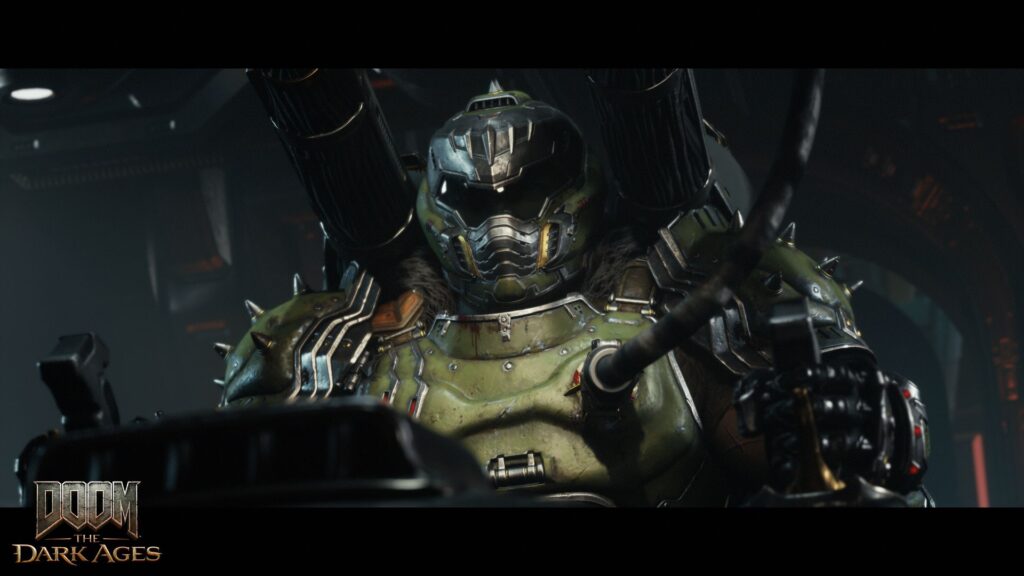
It was going to be a flimsy segue anyway. Look, the mech sequences in DTDA are bad. Bad by every metric. On-foot the Slayer moves like a tank already. He has a weight about him, his footsteps have impact, he stomps around. It’s something I appreciate a lot, actually, the way they made him feel solid. I don’t like the “Stand and Deliver” idea at the core of DTDA, but I think the character design sells the concept better than almost anything else in the game. He’s a fucking unit.
So getting in a giant mech and then stomping around with a lot of impact makes no meaningful difference to me. You might as well be on stilts for all the difference it makes. The only difference is that as a mech, you can’t use any of your weapons and the linear level design has somehow narrowed even further.
And now, instead of a shield to parry attacks with, you dodge them. Sometimes I wonder if Doom: The Dark Ages started its life as a first person tribute to Souls games, and along the way something went horribly wrong. I could see a trajectory out of Doom Eternal where, evolved upon, the next game got soulsier.
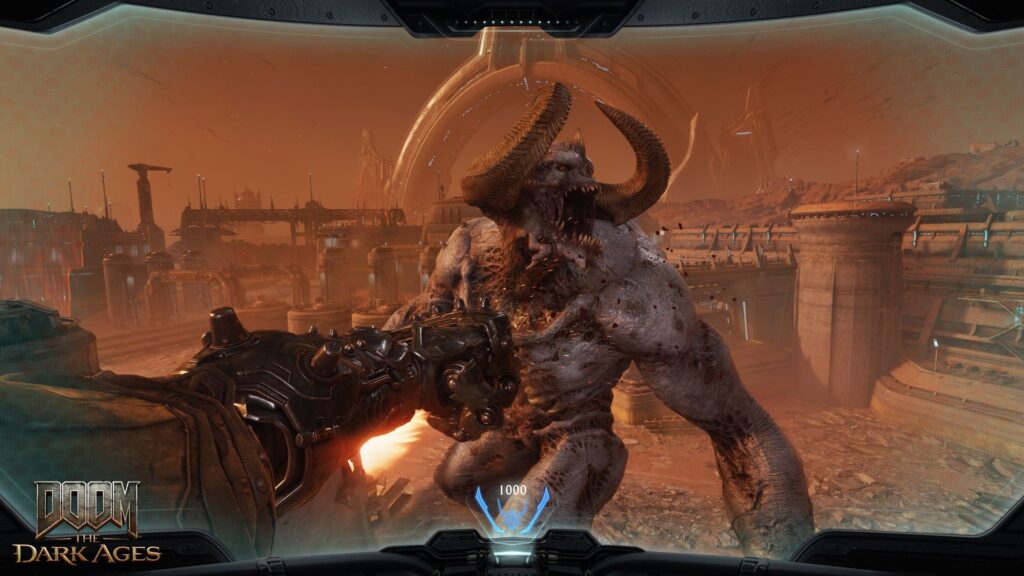
It would explain the shield and the dodging. Not so much anything else in the game.
But I digress. The dodging, like the shield parrying, is timed on a window so large you could fit an Atlan Mech through it. On Ultra-Violence difficulty I never had any trouble avoiding damage so long as I could see it coming. Bizarrely, you don’t even need to dodge in a specific direction as the Mech. At least in other games where you sloppily dodge incoming melee attacks, you have to pick the right direction. It’s not a high skill ceiling, but it’s something. In DTDA, it doesn’t matter where the attack is going—press the dodge button at least once during the 38 minute window and you will evade it.
“But Joab,” you say. “Doom: The Dark Ages has a robust settings menu where you can adjust all manner of things, including the timing windows and projectile speeds! Why are you complaining when you could just do that?”
Great question the Scarecrow. Because I don’t think I should have to? Because I want to review the game the way most people will play it, which is by picking one of the middle difficulties and then experiencing things? Because I think a Doom game should be fun and challenging without my having to spend 30 minutes dialling in the settings like I’m James Hoffman with a new Espresso Machine?
Moving on, at least in the dragon flying segments the dodging is directional. I actually enjoyed flying the dragon in DTDA. It’s a very different style of play—you have six degrees of freedom of movement, and while the level design is still limited, it’s fairly open. It breaks up running around as the Slayer in a satisfying way, which is definitely its purpose.
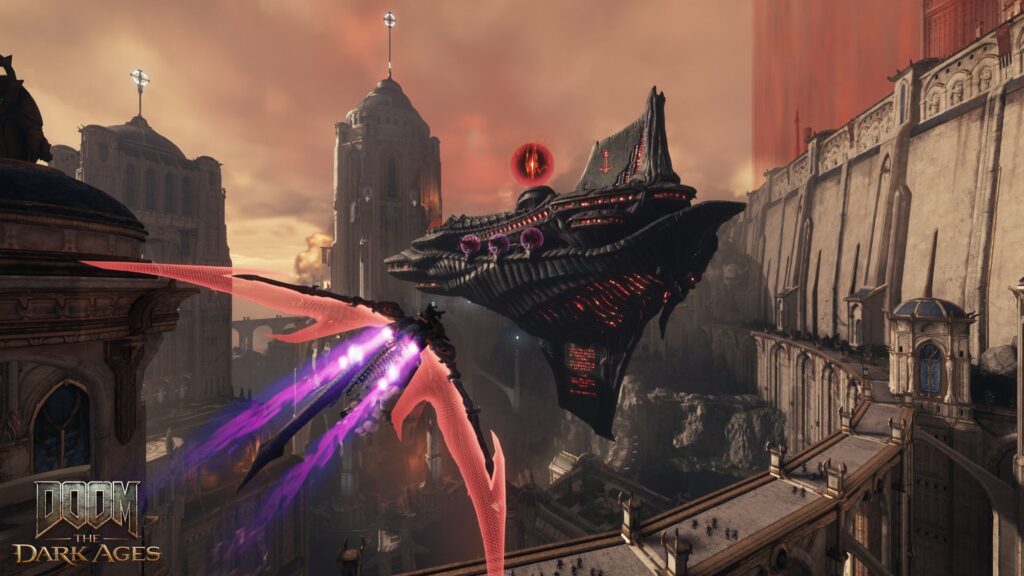
But eventually you’re back on the ground, doing the same old stuff. Each fight plays out the same way. You identify the strongest enemy. You kill all the other smaller foes while intermittently parrying the strong enemy. With all other enemies taken care of, you then kill your primary combatant. Outside of boss fights, the entirety of DTDA is this repeated ad nauseum.
Thanks to the shield, though, it’s actually worse than the above. If it was just that, it’d almost be a more complex version of the combat in 2016. At least you’d add the parrying into things, so you’d be running backwards, parrying and killing enemies via your own personally determined ranking of threat.
But the shield also allows you to ‘shield dash’ across to enemies. In theory this is to allow you to charge into battle, but using it for this is fundamentally a mistake. If a large enemy is filling your vision, your threat analysis ability is restricted. If some parryable projectiles are coming your way, you have less time to react to them. Doom is a first person shooter, and the Slayer has a robust arsenal of, you know, guns. Projectile weapons. You’re facing enemies that will happily melee attack you.
Why would you ever close the distance?
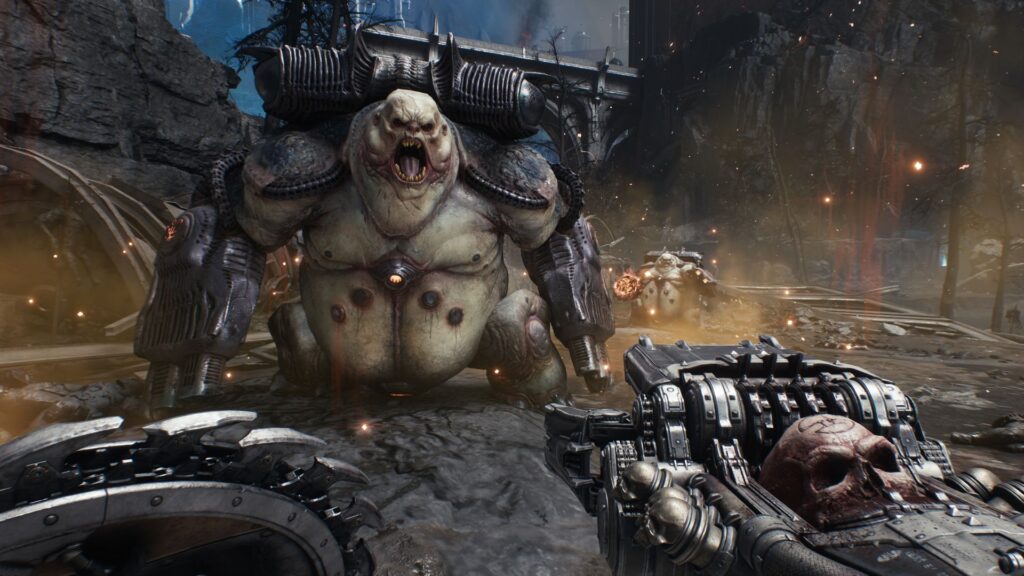
No, in practice the shield dash is used for the opposite. Most of the time, it’s best used to create more distance between you and the bigger, badder enemies. Doom: The Dark Ages, unable as it is to risk creating a scenario where a player might be confused, constantly spawns in ‘fodder’ demons for the Doom Slayer to feed upon. Whenever your resources drop low, these useless dumbasses will spawn in for you to leap to and exploit.
Out of ammo for your super shotgun? Turn around, find a fodder demon, and melee them. Running low on health? Shield dash a fodder demon to get healthy again. Need armour for some reason? I can’t remember how to acquire armour because it was literally inconsequential to my playthrough. Because I could always top up on health off a fodder demon.
The shield not only allows the Slayer to Stand and Block, it lets him Run and Recover.
Not exactly the Rip and Tear philosophy.
And don’t even get me started on the ludonarrative dissonance of it all.
Why would the armies of hell spawn in fodder demons for the Slayer? I mean I guess they’re Hell, so maybe they’re doing it to torture the fodder demons? But it actively helps their main enemy, so strategically it seems flawed.
And when you kill the main enemy of a fight, all the other enemies—not just the fodder, everything—despawns. Is Hell trying to retain some resources here? What’s going on? In video game terms, it sucks shooting at an enemy as it despawns, I’ll tell you that for free (I’m telling you everything for free, but let’s not dwell on that).
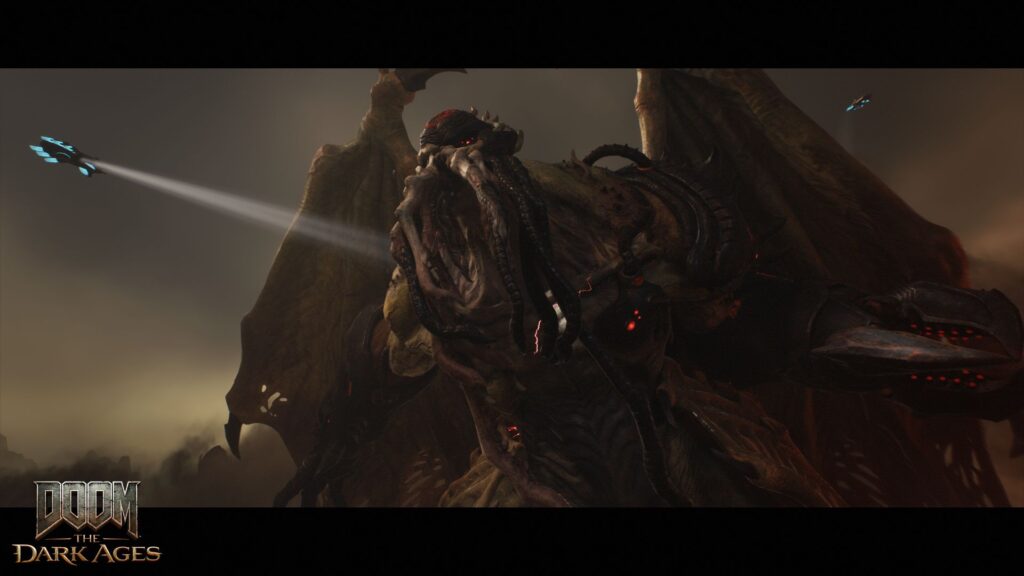
Later on, when you get swallowed by Cthulhu (or a being that looks a lot like a Cthulhu, anyway), why would the Generals of Hell spawn enemies all up in Cthulhu’s guts? Is that within the scope of their power? Why not spawn a fodder demon inside the Slayer’s guts? I bet our menacing hero wouldn’t recover from that with a simple health kit.
On the subject of Cthulhu—the game doesn’t get good until you’re in his realm, and it’s maybe the greatest tragedy of DTDA. They’re not even full levels, but my two favourite parts in DTDA happen after you travel to the Old God’s realm. You saw the spoiler warning, you knew this was coming.
They’re inexplicably relegated to secret areas, but they both play with the nature of reality through Non-Euclidean and Recursive Geometry. Our Doomguy finds himself running around circular corridors that never end, turning back on hallways that are now dead-ends, falling endlessly through water features that loop back on themselves, gravity be damned. Liminal space level design, perfectly suited to its environment in the realm of an eldritch dream god.
I was reminded of Effect and Cause, the level in Titanfall 2 that could have been an entire game—here we had two small level sections that could have been an entire level.
When the player is swallowed by Cthulhu, an entity described canonically as “eldritch contradictions of all matter, force, and cosmic order”, why not then deploy our Slayer into levels where up is down and nothing makes sense? Why not give players a brief moment to feel terror as they realise they need to use their brains to get through this labyrinth of insanity, that they can’t simply shoot their way out for once?
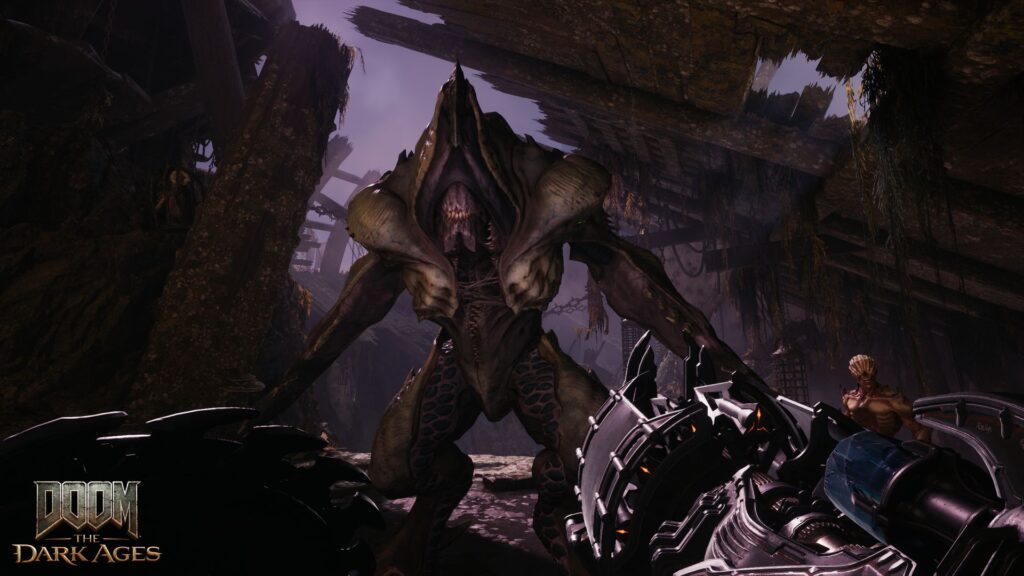
Imagine my disappointment when Cthulhu’s innards are not just a regular old video game level, the legions of hell are spawning (and despawning) in while I try to shoot my way out.
But of course that’s what happened, because this is a game that stops everything to explain everything. A game where, when the player is challenged to navigate an infinite bleak forest without the aid of an all-knowing map for once, an objective marker still appears to make sure even the mechanically illiterate are able to reach their next location.
In the end I can’t tell if Doom: The Dark Ages just thinks very, very little of players or if it is so steadfastly trying to appeal to as many people as possible that I’ve simply been left by the wayside. What I do know is that they created something brilliant with Doom Eternal, and it is staggering to see them throw that away to chase Doom 2016 but worse.

